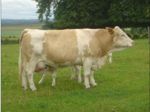Oesophageal Groove
Revision as of 14:07, 6 September 2010 by Bara (talk | contribs) (Text replace - "[[The Abomasum - Anatomy & Physiology|" to "[[Abomasum - Anatomy & Physiology|")
Introduction
The oesophageal groove is present in newborn ruminants. It is a channel taking milk from the oesophagus into the rumen, omasum and then abomasum, bypassing the reticulum.
Histology
Formation of the Groove
- Posture- lifting head to suckle
- Calcium ions from the milk
- Teat or teat-shaped experience
- The formation of the groove can be overridden, e.g. bucket feeding calves
Groove Closure
- Unconditioned reflex when the animal is eager for milk
- Water consumption does not usually iniatiate groove closure
- Age when the rumen becomes fully functional and the oseophageal groove closes differs between ruminants
- In calves 20 weeks
- In lambs 8 weeks
- In deer 16 weeks
- In goats 12 weeks
- Closes by reflex stimulation of the cranial laryngeal branch of the vagus nerve (CN X) (takes 2-5 seconds)
- With time becomes a conditioned reflex
- Closure consists of two movement
- Lips of the groove become firmly opposed and shorten
- Lips become inverted and twisted around the axis of the right lip of the groove, drawing the reticular mucosa over the right lip
Function in the Adult Ruminant
- The groove is stimulated in adult ruminants by ADH
- The groove can also be closed in adult ruminants by the administration of drugs, e.g copper sulphate, which is of use to prevent drugs becoming diluted in the forechambers. Instead, it directs the drugs directly to the reticulum.
